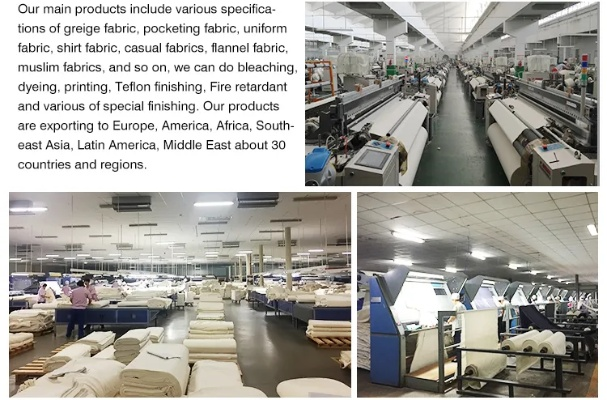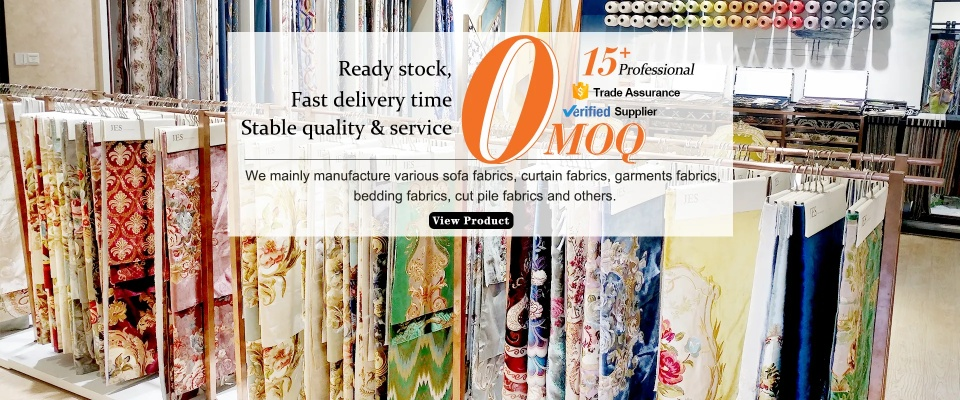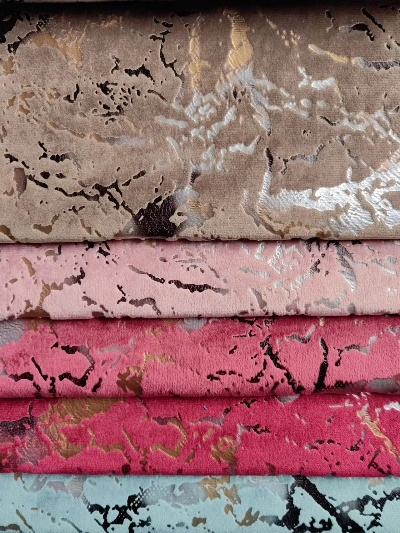The Textile Industry:A Complex and Vital Global Industries
The textile industry is a complex and vital global sector, responsible for the production of millions of items that are used in daily life. From clothing to furnishings, textiles play an essential role in human society. The industry employs over 20 million people worldwide, with significant contributions to economic growth and job creation. Despite facing challenges such as climate change and resource depletion, the textile industry remains resilient and adaptable, driven by innovation and technological advancements. As demand for sustainable and eco-friendly textiles grows, the industry is poised for further growth and development.
Introduction: The textile industry is one of the oldest and most diverse industries in the world, spanning across various countries and continents. It is responsible for producing a wide range of products including clothing, home furnishings, industrial materials, and more. This industry plays a crucial role in the global economy, contributing significantly to employment, income generation, and trade. In this article, we will explore the different aspects of the textile industry, including its history, current state, and future prospects.

Historical Overview: The textile industry can be traced back to ancient civilizations like Egypt, Greece, and Rome. However, it was not until the 18th century that the industrial revolution brought about significant changes in the industry. The development of machines like the spinning jenny and the power loom led to the mass production of textiles, which opened up new markets and opportunities for entrepreneurs. Today, the textile industry is a multifaceted sector with a vast array of products and processes.
Products and Processes: The textile industry produces a wide range of products, including clothing, household goods, and industrial materials. Clothing includes everything from casual wear to formal attire, while household goods include towels, sheets, and curtains. Industrial materials include non-woven fabrics, yarns, and other components used in manufacturing processes.
To produce these products, textile industries rely on various processes such as weaving, knitting, crocheting, and sewing. Weaving involves interlacing threads to create a fabric, while knitting involves looping individual threads together. Crocheting is a form of knitting where the stitches are worked in a circular pattern, while sewing involves attaching two pieces of fabric together.
Market Trends: The textile industry is highly competitive and subject to global market trends. One of the biggest challenges facing the industry is the shift towards sustainable and eco-friendly materials. As consumers become more conscious of environmental impact, demand for organic cotton, recycled polyester, and other eco-friendly materials has increased. Additionally, advancements in technology have led to the development of new materials and processes that offer better performance and durability at lower costs.
Another trend in the textile industry is the rise of e-commerce. With the increasing popularity of online shopping, many companies have shifted their focus towards developing websites and platforms that cater to customers' needs. This has led to increased competition in the market, but also created new opportunities for innovative businesses.
Innovation and Technology: Technology has played an important role in shaping the textile industry. Advances in printing techniques, dyeing processes, and fiber technologies have allowed manufacturers to create more intricate designs and colors. Machine learning and artificial intelligence are also being used to optimize production processes and improve efficiency.
For example, companies like Patagonia use computer-controlled machines to produce high-quality outdoor clothing that is both durable and eco-friendly. Similarly, Bang & Olufsen uses advanced technology to manufacture high-end audio equipment that combines style and functionality.
Case Study: One of the most successful textile companies in recent years is Zara. The Spanish brand has expanded its operations globally, offering customers a wide range of fashionable clothing at affordable prices. Zara's success can be attributed to several factors, including its focus on quality and sustainability, its ability to adapt to changing trends, and its strong marketing strategy.

Conclusion: The textile industry is a complex and vibrant sector that plays a crucial role in the global economy. From historical origins to modern innovations, the industry has evolved over time to meet the needs of consumers and businesses alike. As the industry continues to evolve, it is important for stakeholders to stay informed about new technologies, market trends, and sustainable practices to ensure continued growth and success.
在探讨纺织品是什么产业时,我们可以从多个角度来阐述这个主题,以下是一篇关于纺织品产业的英文口语化内容,并用表格和案例来辅助说明。
纺织品产业概述
纺织品产业是一个多元化的产业,涵盖了从原材料采集、生产到最终销售和使用的整个过程,这个产业涉及到纺织品的研发、生产、销售、进出口等多个环节,它不仅包括传统的纺织品制造,还包括新型材料的应用和创新。
纺织品产业链分析
- 原材料采集:纺织品的主要原材料包括棉、麻、丝、毛等天然纤维,这些原材料需要通过种植、采摘等方式获取。
- 纺织品的生产:在纺织品的生产过程中,需要经过织造、染整、印花等多个工序,这些工序涉及到机械制造、化学处理等技术。
- 销售与出口:纺织品广泛应用于服装、家居用品、装饰品等领域,同时也出口到国际市场。
案例分析
- 纺织品行业现状:近年来,随着人们对环保和可持续性的关注度不断提高,新型材料的应用和创新成为纺织品行业的重要趋势,有机棉、竹纤维等新型材料的纺织品逐渐受到消费者的青睐。
- 案例说明:以某知名纺织品企业为例,该企业在纺织品的研发和生产过程中,注重环保和可持续性,采用了先进的生产工艺和技术,同时积极拓展新型材料的应用领域,该企业还注重品牌建设和市场营销,提高了产品的知名度和竞争力。
纺织品产业的重要性

纺织品产业对于经济发展和就业具有重要影响,随着人们生活水平的提高和消费升级,对纺织品的需求不断增加,推动了纺织品的生产和销售,纺织品产业也是环保和可持续发展的重要领域之一,有利于保护生态环境和促进可持续发展。
纺织品产业未来发展趋势
随着科技的不断发展和应用,纺织品产业将迎来新的发展机遇和挑战,纺织品产业将更加注重环保和可持续性,同时也会更加注重新型材料的应用和创新,纺织品产业还将更加注重品牌建设和市场营销,提高产品的竞争力和市场占有率。
补充说明表格
以下是关于纺织品产业的表格补充说明:
| 类别 | 描述 | 相关数据或案例 | | --- | --- | --- || 包括原材料采集、纺织品的生产、销售与出口等多个环节 | 纺织品的原材料主要包括棉、麻、丝、毛等天然纤维 | | 行业现状 | 随着环保和可持续性的关注度不断提高,新型材料的应用和创新成为重要趋势 | 该企业注重环保和可持续性,采用先进的生产工艺和技术 | | 案例分析 | 以某知名纺织品企业为例 | 该企业在纺织品的研发和生产过程中注重环保和可持续性,积极拓展新型材料的应用领域 | | 产业链关键环节 | 纺织品的研发和生产 | 包括织造、染整等工序 | | 发展趋势 | 随着科技的不断发展和应用,更加注重环保和可持续性 | 如有机棉、竹纤维等新型材料的纺织品逐渐受到消费者青睐 | | 相关政策与法规 | 支持纺织行业发展和创新的相关政策与法规 | 如国家对纺织行业的支持和鼓励政策等 | 仅供参考,如需更多信息,建议查阅相关文献或咨询行业专家。
Articles related to the knowledge points of this article:
Exploring the World of Textiles at Nanjing Kunteng
The Role of Textile Testing Laboratories in the Fashion Industry
The Unparalleled Luxury of 腾翔印花纺织品
Textile Chlorination Test Standards and Case Studies
Exploring the Beauty and Durability of Yishu Li Textile Factory



